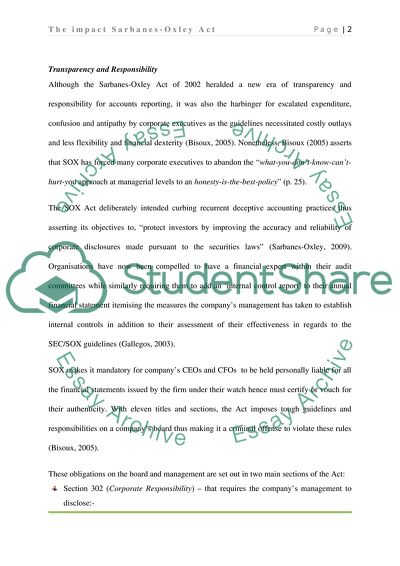Cite this document
(The Impact of Sarbanes-Oxley Act Term Paper Example | Topics and Well Written Essays - 4250 words, n.d.)
The Impact of Sarbanes-Oxley Act Term Paper Example | Topics and Well Written Essays - 4250 words. Retrieved from https://studentshare.org/law/1735693-the-impact-sarbanes-oxley-act
The Impact of Sarbanes-Oxley Act Term Paper Example | Topics and Well Written Essays - 4250 words. Retrieved from https://studentshare.org/law/1735693-the-impact-sarbanes-oxley-act
(The Impact of Sarbanes-Oxley Act Term Paper Example | Topics and Well Written Essays - 4250 Words)
The Impact of Sarbanes-Oxley Act Term Paper Example | Topics and Well Written Essays - 4250 Words. https://studentshare.org/law/1735693-the-impact-sarbanes-oxley-act.
The Impact of Sarbanes-Oxley Act Term Paper Example | Topics and Well Written Essays - 4250 Words. https://studentshare.org/law/1735693-the-impact-sarbanes-oxley-act.
“The Impact of Sarbanes-Oxley Act Term Paper Example | Topics and Well Written Essays - 4250 Words”, n.d. https://studentshare.org/law/1735693-the-impact-sarbanes-oxley-act.


